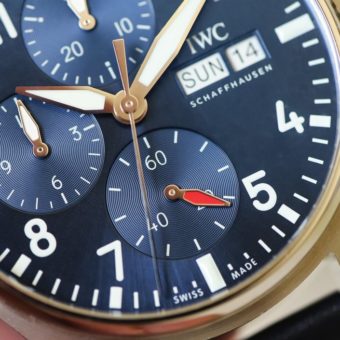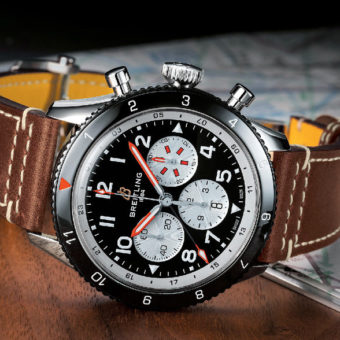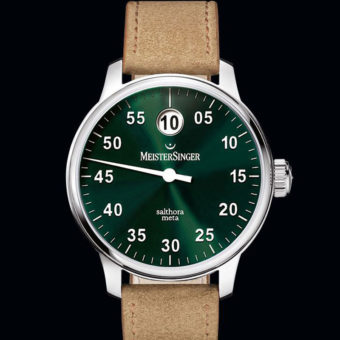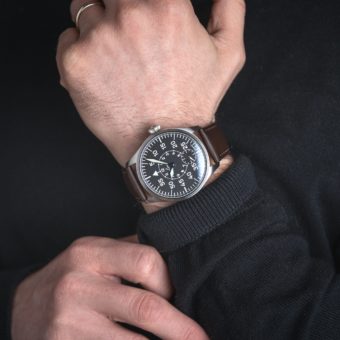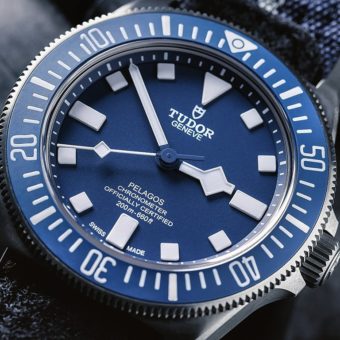 Bell & Ross has released photos and info on its latest trio of new watches in its BR 01 Aviation collection, inspired by instruments in aircraft cockpits, set to debut at Baselworld. The new models — called Heading Indicator, Airspeed, and Climb — join last year’s triumvirate of the Horizon, Altimeter and Turn Coordinator to bring the “flight instrument” collection to six.
Bell & Ross has released photos and info on its latest trio of new watches in its BR 01 Aviation collection, inspired by instruments in aircraft cockpits, set to debut at Baselworld. The new models — called Heading Indicator, Airspeed, and Climb — join last year’s triumvirate of the Horizon, Altimeter and Turn Coordinator to bring the “flight instrument” collection to six.The Swiss brand, founded in 1992 by Bruno Belamich (“Bell”) and Carlos Rosillo (“Ross”), has been releasing watches based directly on aviation instruments since 2010, starting with that year’s BR 01 Compass and following it up with 2011’s BR 01 Radar. The company has again delved into aircraft instrumentation panels for this year’s new releases, basing the watches’ designs on cockpit controls that are essential to flying and navigation.
The BR 01-92 Heading Indicator is based on a device called a gyrocompass (sometimes referred to as a course or heading indicator), which indicates an aircraft’s course during both manual flying and autopilot. The BR 01-92 Airspeed takes its cues from the anemometer, which measures an aircraft’s speed in relation to the air in which it is moving. And the BR 01-97 Climb is inspired by an instrument called the variometer or vertical speed indicator, which uses atmospheric pressure to measure whether a plane is ascending, descending or in level flight.
The dial of the BR 01-92 Heading Indicator is made up of three independent, concentric disks, graduated for the hours and minutes. The hour indicator, a yellow triangle pointer, is on the outer disk, and the minutes are indicated on the middle disk. The seconds disk in the center is not graduated and features a yellow hand. As on the gyrocompass, the indications W,E, and S (for West, East and South) are also on the outer disk, while the N (for North) indication has been replaced by the yellow triangle that points to the hours. Another element from the original instrument, a yellow outline of an airplane, is engraved under the crystal, along with yellow hour indices. Since each disk weighs 30 times more than a watch hand, they needed to be extra-light in order to reduce neither the power reserve nor the accuracy of the watch, while still needing to be strong enough to avoid deformation and friction. To accomplish this, Bell & Ross’s designers had to develop special materials and new techniques. As they rotate, an adjustment to the nearest micron ensures that the disks are constantly parallel.

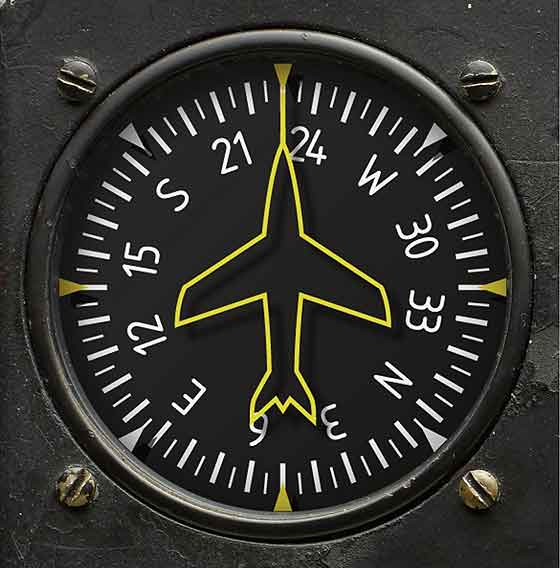
The BR 01-97 Climb echoes the design of the variometer, with a power-reserve indicator replacing the indication of vertical speed on the original device. This indicator is yellow, contrasting with the black dial and standing out from the white numerals and indices. The date is displayed in a window at 3 o’clock. The typeface used for the “Up” and “Down” matches that on the instrument that inspired the dial. Since a variometer uses only a single, white hand, the hour hand has been darkened, helping the dial to more closely resemble the instrument. The hands and the digits are covered in a white photo luminescent coating, contrasting with the black of the dial and enhancing legibility.
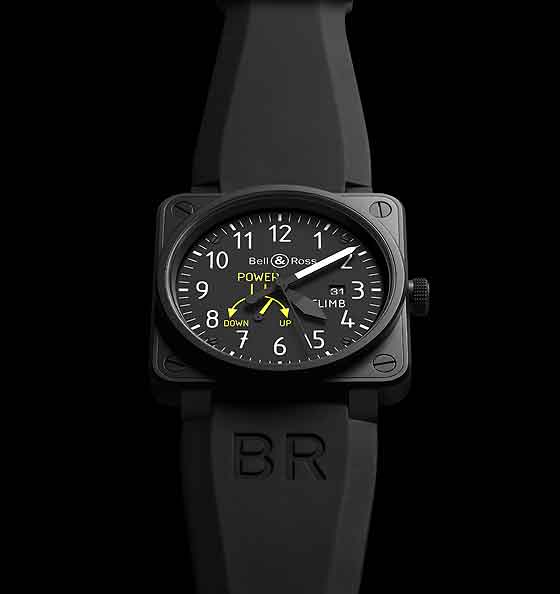

The BR 01-92 Airspeed borrows the graphic characteristics of the anemometer for its unconventional time display. Echoing the arrangement of elements on the original instrument, the hour, minute and second graduations are separated to promote the minutes on the main dial while the hours are displayed in the center. The three colors that indicate levels of criticality on a cockpit anemometer — green, white and yellow — appear on the outer ring of the dial and indicate the zones by quarter-hours. The hands and indices have a white photoluminescent coating.
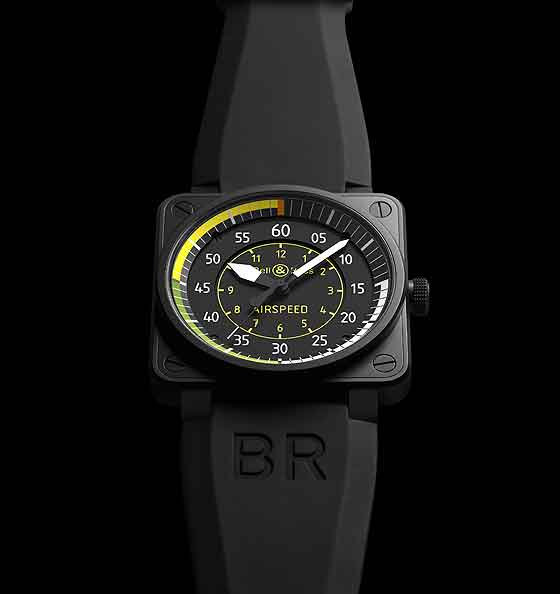
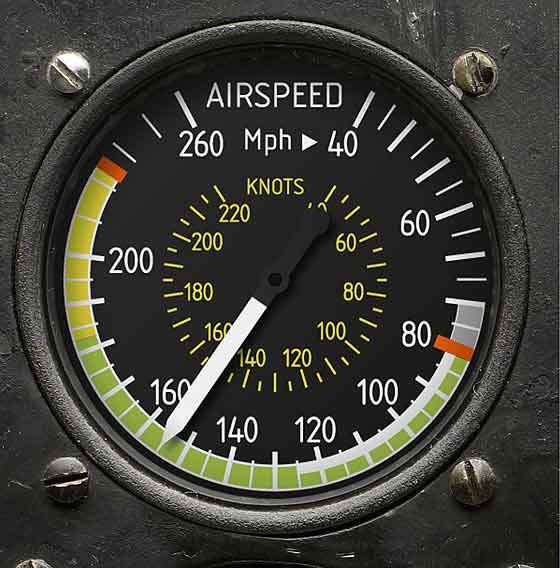
All of the new Aviation models’ cases are 46 mm in diameter and have a black carbon PVD finish, intended to emulate the look of a cockpit instrumentation panel and to aid in legibility by eliminating glare. The cases have screw-down crowns and sapphire crystals with nonreflective coating and are water-resistant to 100 meters. The BR 01-92 Heading Indicator and BR 01-92 Airspeed are powered by ETA 2892 automatic movements; the BR 01-97 Climb, with its power-reserve and date functions, contains an ETA 2897. All the watches are on straps made of rubber and heavy-duty synthetic fabric. All three of the new Aviation Collection models are limited to 999 pieces; the first 99 will be released in an exclusive collectors’ box that holds all six models from 2012 and 2013 and resembles an aircraft control panel. Prices have yet to be determined.




